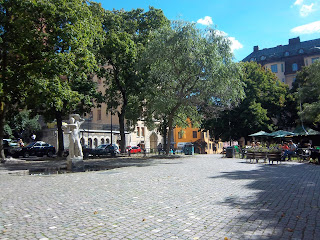Readers, something really surprising has happened. My blog
has been hacked by Russian hackers. Don’t worry that I’ve flipped out. I know
it’s them because in the statistics, I see the largest number of my readers are
in Russia. Besides that, I keep getting anonymous comments that don’t make any
sense. Sometimes they’ve been just a bunch of numbers. Other times they’re a
bunch of nonsense words and I’ve had to send them all to spam. Who do they
think I am - Hillary Clinton? I’m kind of flattered that they think I’m someone
prominent.
So I’m thinking of sending them a comment in reply.
Let me know what you think.
Dear Russian Hackers,
I don’t know why you’re bothering to hack my blog, but I kind of feel sorry for you because you’ve wasted a whole lot of your time. You’re not going to find out anything from me that you couldn’t find out by reading the newspapers. I’m just a private American citizen exercising my freedom of speech while I still have it. The events I write about are all public knowledge that I’m merely expressing my opinion about.
It reminds me of two funny FBI stories. One was an old
friend of mine was a member of the Communist Party. The FBI sent an agent to
spy on him. They spent so much time together that they got to be friends. When
the FBI agent’s dog ran away, my friend helped him to look for his dog.
During the Vietnam War, my friends and I went to an
anti-war march. We met a man who was wearing a “May 2nd Movement”
campaign button. I asked him what that was and he told us. About a year later,
one of my friends told me that he read a story about an FBI agent spending six
months with the May 2nd Movement and finding out everything we did
in our ten-minute conversation. I guess bureaucracies have something in common
all over the world.
I’m willing to let bygones be bygones if you’d just
say you’re sorry and unjumble my blog. While you’re at it, could you do me a
favor? My aunt was a great cook and she made fabulous beef Stragonoff. I lost
the recipe so could you send one to me? If you tell me your real name, I’ll
mention it in my blog.
And that’s another thing: Just a friendly tip: You’d
probably do better if you used an American name on your comments and improved
your English grammar. Just saying.
Happy New Year. May 2017 be a more peaceful one for
all of us. Lisa Sachs
So readers,
until this hacking problem is resolved, I won’t be able to post anything. Happy
New Year to all of you and may 2017 be a peaceful year for all the world.













































